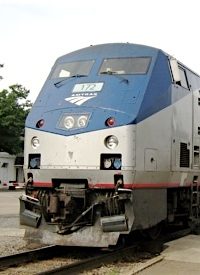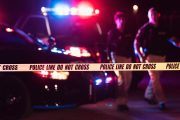
ABC News reported on October 6 that the heads of the nation’s largest mass transit systems were briefed on that day about a planned law-enforcement “surge” this week along Amtrak routes.
The report noted that Amtrak is holding a high-security exercise on October 8, during which uniformed officers will be visibly present on national transit routes. The exercise — named RailSafe — will include all the local police agencies along the Amtrak routes chosen for the exercise.
ABC News consultant Richard Clarke, a former White House national security official, offered a possible explanation for the security drill: “If al Qaeda is planning simultaneous attacks in Europe there’s nothing to say they could not also include the US on that list of simultaneous attacks.”
However, a senior Department of Homeland Security official said the rail exercise has been “long-planned” and “is not connected in any way” to the terror threat in Europe.
On the previous day, news sources including VOA News reported that French police had arrested 12 people in anti-terror sweeps across southern France and had detained nine people with guns and ammunition near the southern port city of Marseilles and nearby Avignon. VOA reported that another three men, linked to a man of Algerian origin caught in Italy with a bomb-making kit, were arrested near Marseille and Bordeaux.
The U.S. State Department has warned of possible strikes by al-Qaeda and its affiliates in Europe and said that terrorists could use a variety of “means and weapons” and target both official and private targets.
A report from Newsroom America cited Amtrak Media Relations Director Steve Kulm, who said the Railsafe exercise will also involve explosive detections, K-9 units, and unannounced random baggage checks, as well as other security measures.
Kulm also said that Railsafe will coincide with the European Rail Action Day exercise, but stated that the two are not related to the recent European terrorist warnings. Amtrak, the public side of the National Railroad Passenger Corporation, is totally owned by the U.S. federal government.
A report from ABC News affiliate in Baltimore on October 6 said:
According to U.S. officials, law enforcement will be checking Amtrak trains during an exercise called, RailSafe. Leaders of country’s biggest mass transit systems have been briefed about a possible terror threat.
U.S. government leaders are not saying that a terrorist attack is imminent. Amtrak will be conducting the security exercise Friday where a number of federal agents from local police to Homeland Security and the FBI, will be walking through Amtrak stations and along routes.
Since the September 11 terrorist attacks in 2001, Americans have become almost accustomed to the very visible presence of (and sometimes intimate searches by) agents of the federal Transportation Security Agency, an agency that did not even exist nine years ago.
However, those who chose to take alternate forms of transportation such as trains, buses, and private automobiles have managed to avoid the scrutiny of federal law-enforcement officers.
Federal involvement in railroad security, even for short exercises such as RailSafe, should be disconcerting for those who have read the history of government control of national transportation infrastructures under various totalitarian regimes, that of Nazi Germany being a prime example.
A Wikipedia article about the Deutsche Reichsbahn (“German Reich Railway”) notes: “During the Nazi dictatorship, along with other measures of gaining total control (see Gleichschaltung), the rail network was again placed under direct government control on 10 February 1937, through a newly enacted law re-organizing the Reichsbank and the DRG.”
Of course, no totalitarian regime consolidates control overnight, but must acquire it in increments, usually in the name of “national security.”
As we noted in our article for The New American online, “Cheney Defends ‘Enhanced’ Interrogation,” on May 2, 2009:
Consider another national emergency. On February 27, 1933, the building housing the German Reichstag (parliament) in Berlin was seriously damaged by fire. On the evening after the Reichstag fire, the aging German president, Hindenburg, was pressured by Chancellor Hitler into signing an emergency “Decree for the Protection of the People and the State.” It declared: “Restrictions on personal liberty, on the right of free expression of opinion, including freedom of the press; on the rights of assembly and association; and violations of the privacy of postal, telegraphic and telephonic communications and warrants for house searches, orders for confiscations as well as restrictions on property, are … permissible beyond the legal limits otherwise prescribed.”??Within a month, members of the Reichstag met in Berlin’s Kroll Opera House on March 23, 1933 to consider Hitler’s Enabling Act, officially called the “Law for Removing the Distress of the People and the Reich.” In his speech to the Reichstag before the vote, Hitler sought to calm the fears of those who feared the increase in governmental power that the act would represent:
The government will make use of these powers only insofar as they are essential for carrying out vitally necessary measures…. The separate existence of the federal states will not be done away…. The number of cases in which an internal necessity exists for having recourse to such a law is in itself a limited one.
Granted, freedom to travel freely in the United States since 9/11 has not been curtailed nearly as severely as it was in Nazi Germany in the years following the Reichstag fire, but the Third Reich was not built in a day.
And while it is prudent not to react in an overly alarmist manner every time the federal law enforcement become involved in transportation, by the time TSA agents are stationed at every railroad station in America and demand to see “your papers,” before you are allowed to board a train, it will be too late.



